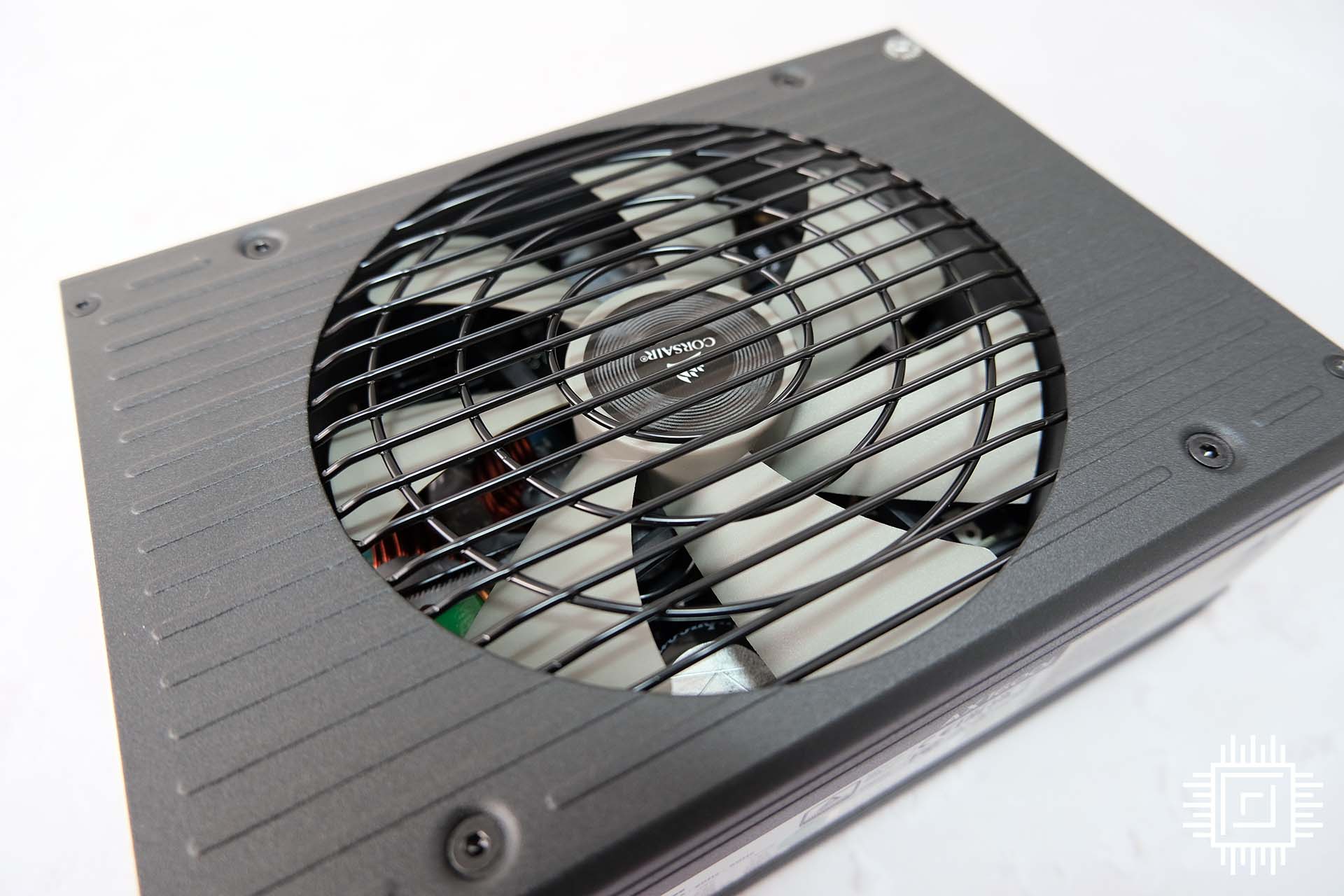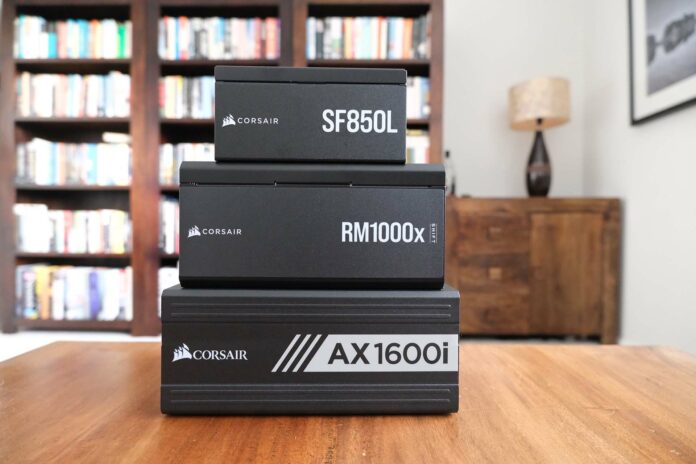A desktop computer’s power-supply unit (PSU) is an important but often overlooked part of any quality build. If chosen correctly, a PSU will supply years of uninterrupted power with the minimum of fuss. It’s the one component that you can reuse for multiple upgrades, and there’s every reason to expect at least a decade’s good service. CPU sockets come and go, memory changes form factor and standards, but the PSU is an immutable feature. Buy cheap, buy twice.
Appreciating the eclectic nature of PC builds – you can choose a tiny Mini-ITX system or opt for a monster RTX 4090-toting gaming behemoth – there is a PSU for every occasion. Guiding you along the right path, here’s a handy four-point checklist for knowing which is the right one for your proposed PC.
Form factor
It stands to reason that the size of your build predicates the size of your PSU. Most builders tend to opt for mid-tower PC cases that provide ample opportunity to include great cooling, ability to house large, powerful components, and cater for heaps of storage. A full-on enthusiast PC, for example, may use an all-in-one liquid cooler attached to a 360mm radiator, high-performance ATX or even E-ATX motherboard, a muscular graphics card such as the Nvidia GeForce RTX 4090 or AMD Radeon RX 7900 XTX, and more SSDs than you can shake a stick at.
For these kinds of systems, a regular ATX power supply makes the most sense. They typically arrive with dimensions of 150mm width, 86mm height, and depth ranging from 140mm to 220mm. To be on the safe side, however, you should check your chassis’ PSU compatibility, as some have restricted depth.
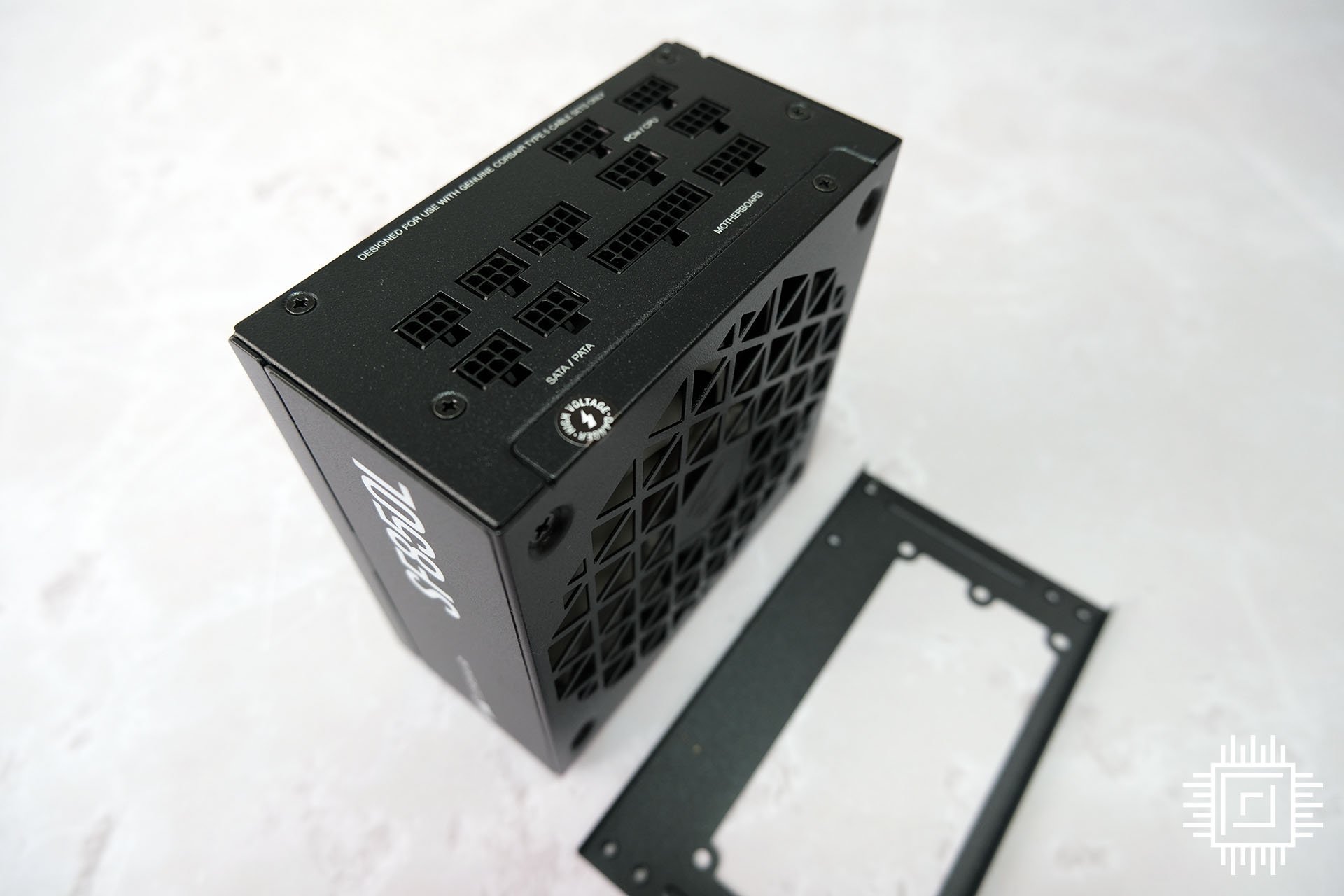
Smaller-form-factor (SFF) systems are gaining in popularity because many can still house an impressive discrete graphics card and powerful CPU. These systems focus on petiteness and clean lines at the potential expense of component expandability. By their very nature, there are fewer available PCIe slots and lesser storage opportunities. Their smaller footprint and internal area generally preclude the use of regular ATX power supplies. Instead, they only use more compact form factors such as SFX or SFX-L.
SFF PCs typically don’t require as much power as larger ATX builds, and this is why SFX / SFX-L supplies tend to offer sub-1,000W peak capacity. Looking at real-world examples, it’s good to know that Corsair typically includes a bracket in an SFX supply’s bundle that allows you to use smaller supplies in bigger cases. In effect, an SFX supply is the best of both worlds – you can use it in both small and large cases without worry.
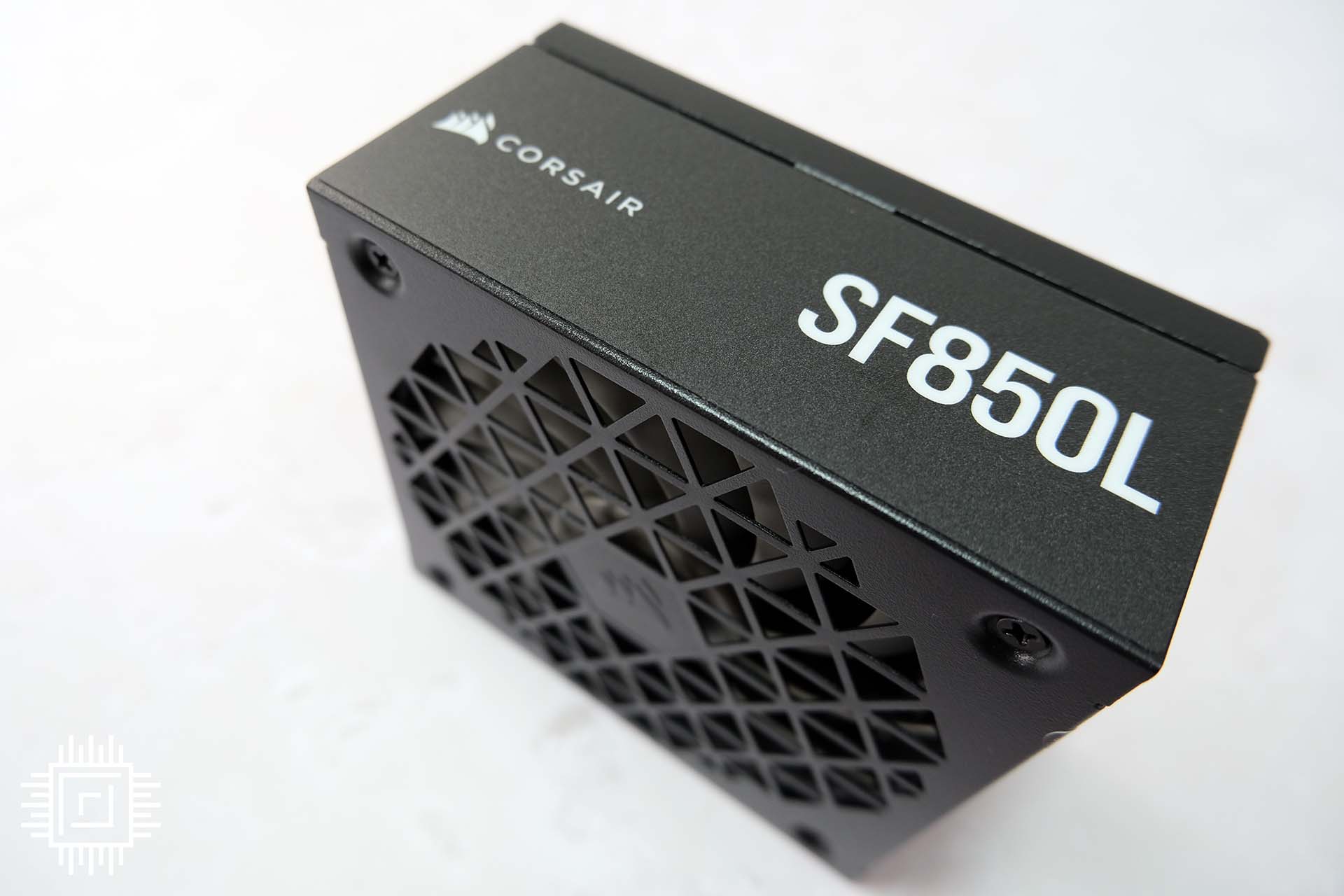
Corsair SF850L
“Corsair SF-L Series Fully Modular SFX Power Supplies with ATX 3.0 and PCIe 5.0 compliance provide the continuous high wattages demanded by the latest PC hardware, all in a space-saving SFX-L form-factor.”
We earn a commission if you make a purchase, at no additional cost to you.
Power output
Going hand in hand with form factor is power output that’s expressed in watts. The PSU’s primary job is converting the alternating current (AC) from a mains socket to direct current (DC) used by computer components. A simple office PC lacking a dedicated graphics card usually only needs a PSU capable of delivering 400W.
If you plan for a mid-range PC, on the other hand, 600W is ample for one featuring a reasonably potent CPU and graphics card. Driving up the power further, opting for a higher class of CPU and GPU raises power budgets up to 800W or so. And at the very top end of the scale, 1,000W-plus is not uncommon for gaming goliaths packing best-of-breed hardware.
Illustrating these important points, the following table shows the kinds of components we’d consider for each PSU wattage category.
| PSU capacity | Typical CPU | Typical GPU |
|---|---|---|
| 400W | AMD Ryzen 3 Intel Core i3 | None |
| 600W | AMD Ryzen 5 Intel Core i5 | AMD Radeon RX 7600 Intel Arc A750 Nvidia GeForce RTX 4060 |
| 800W | AMD Ryzen 7 Intel Core i7 | AMD Radeon RX 7800 XT Nvidia GeForce RTX 4080 |
| 1,000W+ | AMD Ryzen 9 Intel Core i9 | AMD Radeon RX 7900 XTX Nvidia GeForce RTX 4090 |
It’s very important to understand that maximum power output is not the same as typical power output. Let’s take the 800W PSU capacity as an example. Such a PC requires around 500W when gaming with the powerful discrete graphics card, leaving plenty of wattage scope for additional hardware down the line. For this very reason, a good rule of thumb is to buy a PSU with at least 50% more capacity than what you can use today.
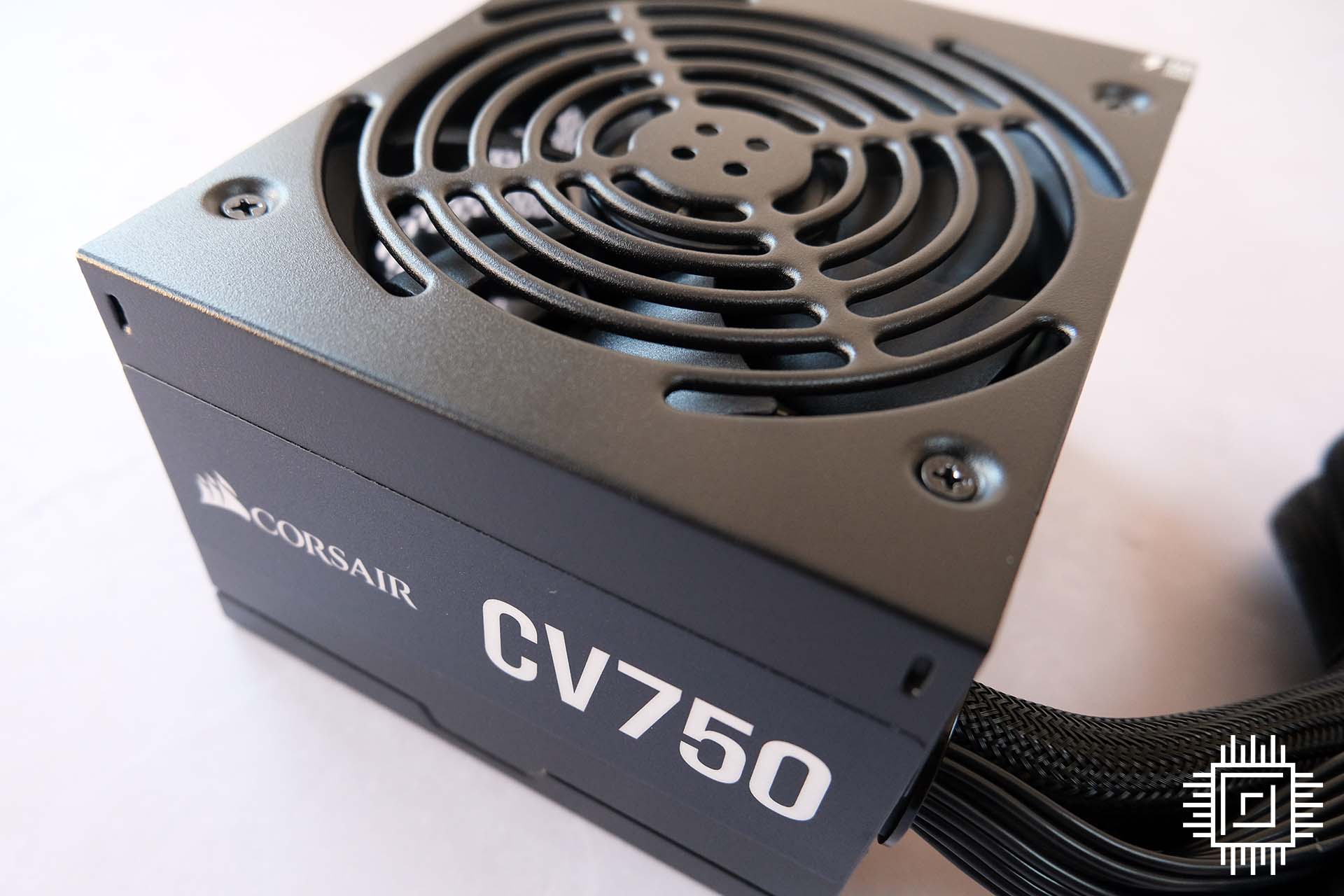
Furthermore, this hypothetical PC likely pulls fewer than 100W when running basic tasks such as Microsoft Office or web browsing. The PSU in the system only provides as much power as is necessary. This means that wattage will fluctuate depending upon application. Don’t be fooled into thinking an 800W PSU always requires 800W, as such a statement is hardly ever true for a home PC.
The additional hardware and engineering required to drive higher wattages means that PSUs generally become more expensive as capacity increases, but other factors also play a part in determining the quality of a supply.
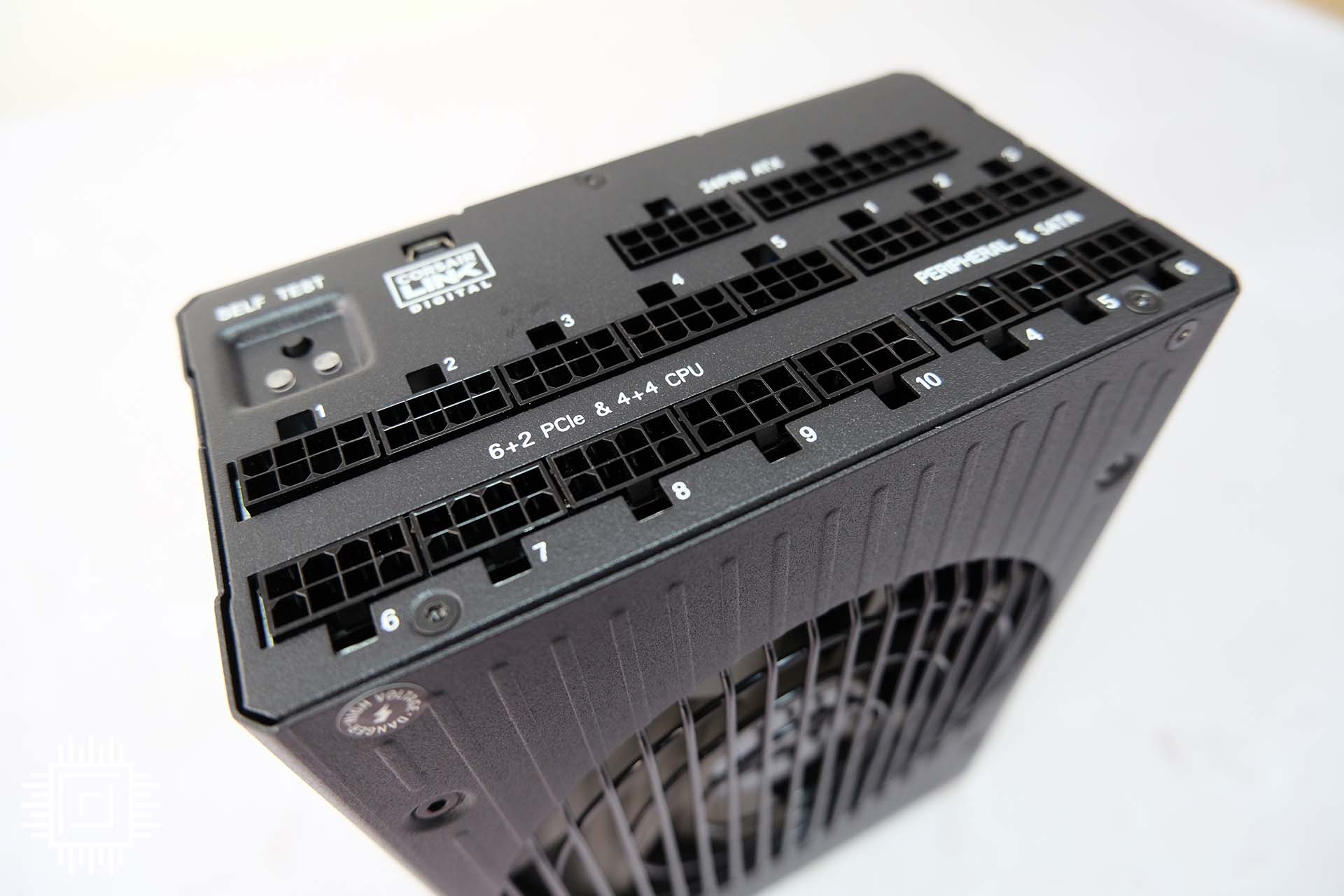
For enthusiasts appreciating the ultimate PSU for that wish list PC, there’s nothing better in the Corsair portfolio than the AXi series. Available in 860W and 1,600W capacities, no stone is left unturned in the pursuit of top-notch performance. This 80 Plus Titanium supply is designed for the most lavish of custom PC builds. A bonus is that you won’t need a huge chassis, either, as the supply’s only 200mm deep.
The sheer power and high efficiency rating combine to offer near-silent running at up to 640W. Enough, we would say, to power a quality gaming PC without the PSU’s fan even turning on. And with 16 SATA connectors, 10 PCIe, and two EPS for workstation motherboards, practically every eventuality is ticked off. The package even includes three customisable magnetic side labels for the style-conscious enthusiast whose hardware is proudly on display.
Corsair AX1600i
“The Corsair AX1600i is the ultimate digital ATX power supply, built using only the best components and state-of-the-art gallium nitride transistors to deliver more than 94% efficiency.”
We earn a commission if you make a purchase, at no additional cost to you.
Efficiency
A PSU’s efficiency is a key metric in today’s world of energy conservation and increasing costs. It’s determined by dividing the amount of power supplied to the components (DC) by input power (AC) as measured at the wall socket. No supply is 100% efficient because there’s inevitable loss in the necessary translation between AC and DC. The higher the efficiency number, the better the PSU’s able to mitigate against this loss. For example, a PSU that pulls 1,000W at the wall and delivers 900W to components is exactly 90% efficient. Another, better supply able to mete out 950W from the same 1,000W is 95% efficient.
Oftentimes adorned on PSU packaging, the 80 Plus is a voluntary certification program launched nearly 20 years ago. Its purpose is to provide an at-a-glance appreciation of a supply’s efficiency by tying it into one of six tiers.
| PSU certification | 20 per cent load | 50 per cent load | 100 per cent load |
|---|---|---|---|
| 80 Plus | 82% | 85% | 82% |
| 80 Plus Bronze | 85% | 88% | 85% |
| 80 Plus Silver | 87% | 90% | 87% |
| 80 Plus Gold | 90% | 92% | 89% |
| 80 Plus Platinum | 92% | 94% | 90% |
| 80 Plus Titanium | 94% | 96% | 94% |
Evaluated over three common loads, achieving a set efficiency is more difficult with each passing grade. Platinum and Titanium levels need substantially better engineering, explaining why so few consumer PSUs make this grade. Nevertheless, PSU design is such that it’s easier to achieve higher grades with larger-capacity models. This is why it’s more common to see Platinum and Titanium crop up at the 1,000W-plus level.
Don’t be afraid to go for a capacity larger than you need right now. Sure, it costs a little more upfront, but PSU efficiency is highest at 50 per cent load. The natural conclusion is that a higher-capacity supply works less hard than one running closer to its limit. This translates into potentially longer lifespan and, more immediately, a quieter computing experience.
Should budget allow, our belief is that you should opt for at least an 80 Plus Gold model. Compatible models provide a great balance between performance and cost. Broadly speaking, you ought to pay up to $20 / £20 for every additional 100W of power over a base 500W and $100 / £100 outlay.
The Corsair RMx Series is the go-to supply in this crucial mass-market space. Often specified by discerning system builders for their high-performance ranges, sensible wattage models between 650W-1,200W broaden the appeal to almost all PCs. The 1,000W and 1,500W HXi Series, meanwhile, are prime contenders for users wanting more power but without the bells and whistles of the comprehensive AXi duo.
Corsair CX750M
“CX Series Modular power supply units are an excellent choice for basic system builds and desktop PC computer upgrades, offering high reliability, low noise, and the flexibility of modular cabling.”
We earn a commission if you make a purchase, at no additional cost to you.
Features
2023’s crop of premium supplies arrive with new features in tow. GPU manufacturer Nvidia released a new type of power connector for its own GeForce RTX 40 Series graphics cards. Known as 12VHPWR and part of the nascent ATX 3.0 specification, this thin, flexible cable provides up to 600W of power to the graphics card. Plenty enough to power an overclocked GeForce RTX 4090! Before 12VHPWR, mind you, a meaty graphics card required up to three bulky 8-pin power connectors. High-end PSUs typically carry at least one 12VHPWR connector, and in some cases two, enabling tidy cabling for a clean aesthetic.
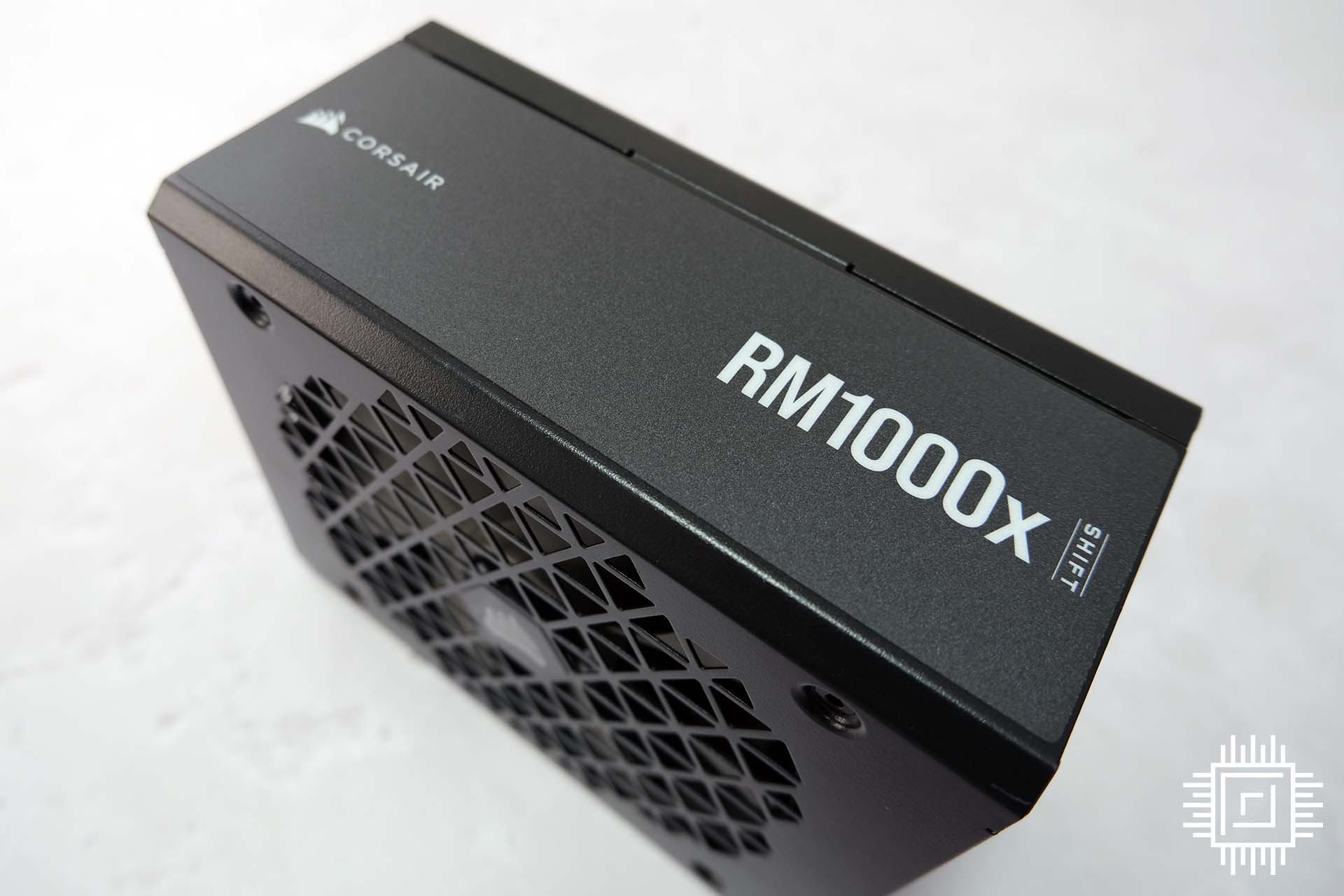
A semi-fanless mode is worth knowing about, too. As we spoke about earlier, most PSUs rarely exert anywhere near full capacity most of the time. High-quality PSUs use semi-fanless mode where the supply’s fan doesn’t turn on until around 40% of overall capacity. For a 1,000W supply, then, that’s up to 400W without any obvious noise generated by the PSU. Generally speaking, high-efficiency supplies almost always have this noise-saving mode, but be sure to check out the detailed specifications before purchase.
In days gone by, all the wiring emanating from a PSU was pre-attached – remember, power is required for motherboard, graphics card, and any peripherals. That’s the still the case with budget models, frankly, as it’s cheaper for a manufacturer to do it this way. Modular cabling, meanwhile, is far more common on premium supplies. These PSUs have dedicated power plugs for various components, meaning you only attach the necessary cabling, hence the modular naming. Every PC uses the main ATX connector, but after that, the choice is entirely up to you. Modular supplies not only look subjectively better, but they also provide cleaner airflow, too. If budget permits, we highly recommend that you should invest in one.
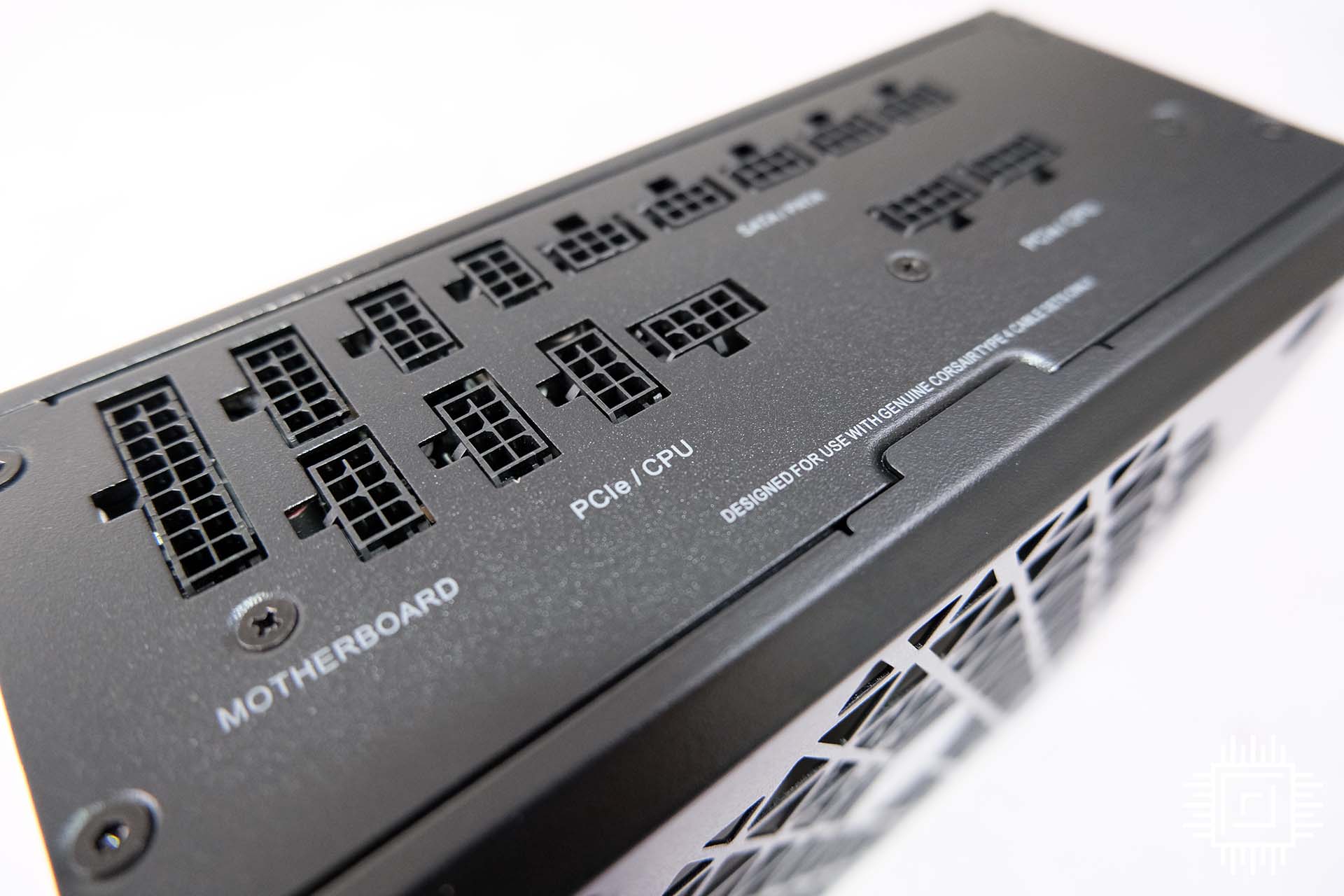
Some enterprising manufacturers go the extra mile by thinking about design holistically. Corsair does exactly this with the all-new and novel RM Shift range. Rather than have the modular connectors sprout out from one end, as is the case with virtually all other supplies, RM Shift moves them to the side.
As with all the good ideas, the simple ones are best. RM Shift’s port relocation offers easy cable management because the required runs are fed in from chassis side panel. An elegant solution to an age-old problem, we wonder why no-one thought of it before. RM Shift makes particular sense in builds where aesthetic is among the most important criterion.
Warranty considerations ought to factor into a buying decision. We’d discourage investing in a power supply whose warranty is less than five years. Corsair, for example, backs the SFL and RMx series with seven years of cover, rising to ten years for range-topping AXi.
Corsair RM1000x
“Corsair RM1000x Series fully modular power supplies with EPS12V connectors are built with the highest quality components to deliver 80 PLUS Gold efficient power to your PC,with virtually silent operation.”
We earn a commission if you make a purchase, at no additional cost to you.
Summary
There’s plenty to think about when choosing the right PSU for the build of today and tomorrow. Key points to consider are form factor, power output, efficiency, and features. No one PSU has it all, so it’s a case of weighing up what’s most important and then finding the best PSU for your purpose and budget.
You should definitely think about a SFF supply if PC footprint is a concern. Geared towards Mini- and Micro-ATX-sized builds, an appropriate supply saves space yet replicates almost everything good about standard ATX PSUs. The Corsair SF850L is a shrunken-down version of a high-quality ATX supply… and none the worse for it.
Mainstream users need to go look 80 Plus Gold efficiency and ascertain their flavour of features. Yet nothing screams high performance as a PSU man enough to power two PCs simultaneously. Bridging the workstation and high-end desktop worlds, a supply like the Corsair AXi 1600 is a no-compromise solution.
Whatever you choose, it’s certainly not worth skimping on features that may become important further down the line. A wise PSU investment will pay dividends for years to come.
